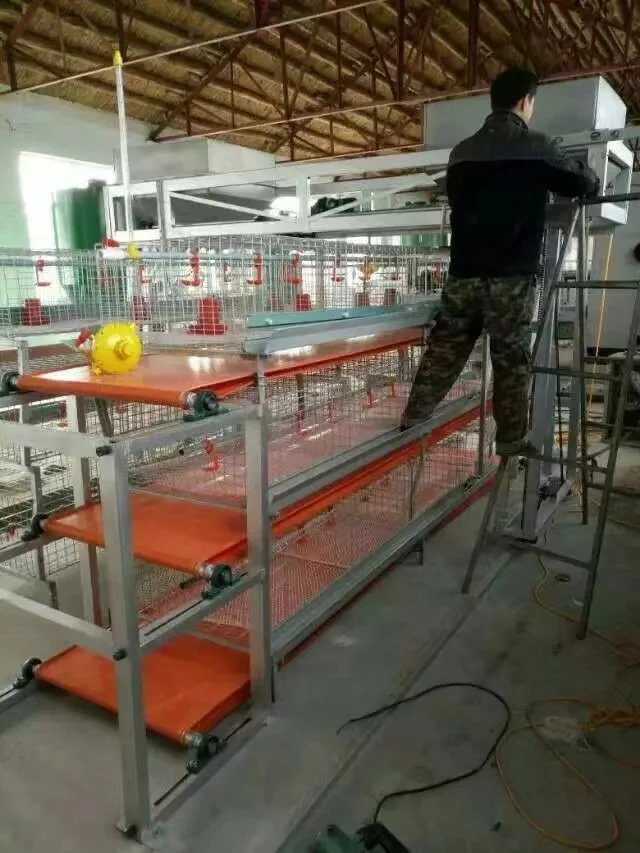Innovative Designs for Efficient Poultry Breeding Cages Enhancing Livestock Management and Production
Aug . 16, 2024 22:47 Back to list
Innovative Designs for Efficient Poultry Breeding Cages Enhancing Livestock Management and Production
The Importance of Poultry Breeding Cages in Modern Agriculture
Poultry farming is an essential sector of the agricultural industry, providing a significant supply of meat and eggs globally. With the growing demand for poultry products, the need for efficient breeding practices has become more critical than ever. One of the most effective tools in modern poultry farming is the use of breeding cages. These structures play a vital role in enhancing productivity, improving animal welfare, and optimizing resource use in poultry breeding operations.
Poultry breeding cages are specially designed enclosures that house chickens, ducks, and other poultry species during their breeding cycles. These cages are engineered to maximize space efficiency while ensuring that the birds have sufficient room to move, eat, and lay eggs. The design of these cages can vary significantly, ranging from simple wire structures to sophisticated systems equipped with automatic feeders, water dispensers, and climate control features.
One of the primary benefits of using breeding cages is the increased biosecurity they provide. In traditional free-range systems, poultry is susceptible to various diseases and parasites that can spread rapidly among numerous birds. By confining birds to a controlled environment, breeding cages help minimize the risk of disease transmission. This biosecurity measure is essential not only for the health of the birds but also for protecting the livelihoods of farmers who rely on healthy stock to sustain their operations.
Moreover, breeding cages facilitate better management of breeding programs. In these controlled settings, farmers can monitor the performance of individual birds closely, assessing their reproductive health and productivity levels. With the ability to track genetic traits and breeding outcomes, poultry breeders can make informed decisions about which birds to pair for optimal offspring quality. This results in improved genetic stock, higher egg production rates, and ultimately, better meat quality.
poultry breeding cage

Another critical advantage of breeding cages is their contribution to resource efficiency. In an age where sustainability and environmental responsibility are paramount, poultry breeding cages can help optimize feed conversion ratios. By keeping birds in a confined space, farmers can ensure that feed is utilized more effectively, leading to reduced waste and lower feed costs. Additionally, with the incorporation of automated systems, the labor required to manage poultry operations can be significantly decreased, allowing farmers to allocate resources more efficiently.
Nevertheless, the use of poultry breeding cages is not without its controversies. Animal welfare advocates often criticize battery cages for restricting the natural behaviors of birds, such as nesting, scratching the ground, and roaming. In response to these concerns, many producers are now adopting enriched cage systems that provide birds with additional space, perches, and nesting boxes, thereby allowing more natural behaviors while still reaping the benefits of confined breeding environments.
Furthermore, regulatory frameworks and consumer preferences are continually evolving. As awareness of animal welfare increases, some markets are shifting towards cage-free and free-range options. Farmers are adapting to these trends by finding a balance between efficient production practices and ethical considerations.
In conclusion, poultry breeding cages offer numerous advantages for modern poultry farming, ranging from improved biosecurity and breeding management to enhanced resource efficiency. While the debate over animal welfare continues, the industry is actively seeking solutions that satisfy both production demands and ethical concerns. As technology advances and farming practices evolve, the role of breeding cages in poultry agriculture will undoubtedly continue to adapt, ensuring that farmers can meet the growing demand for poultry products while maintaining a commitment to animal welfare. Ultimately, the evolution of poultry breeding cages reflects the interconnectedness of agricultural efficiency, sustainability, and animal care in today's world.
-
Automatic Feeding Line System Pan Feeder Nipple Drinker|Anping County Yize Metal Products Co., Ltd.
NewsJul.29,2025
-
Automatic Feeding Line System-Pan Feeder Nipple Drinker|Anping County Yize Metal Products Co., Ltd.
NewsJul.29,2025
-
Automatic Feeding Line System - Pan Feeder Nipple Drinker|Broiler Farming Equipment
NewsJul.29,2025
-
Automatic Feeding Line System - Anping Yize | Efficiency&Durability
NewsJul.29,2025
-
Automatic Feeding Line System - Anping Yize|Poultry Efficiency&Durability
NewsJul.29,2025
-
Automatic Feeding Line System-Anping County Yize Metal Products Co., Ltd.|Durable PP Material&Easy Maintenance
NewsJul.29,2025






